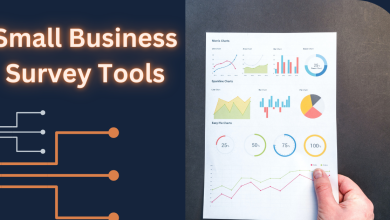Why More Businesses Are Automating Customer Interactions In 2025

A customer sends a message to a business at 2 a.m., expecting instant answers. While this sounds demanding, this is actually 90% of customers today. A delayed response or a mismatched answer can frustrate them and even push them toward competitors. It doesn’t help that customers also want consistency and convenience.
Businesses are already feeling the heat to keep up, and that’s where automation in customer service steps in. It is changing how companies talk to their customers. It’s used in answering simple questions, handling complex issues, and more. But why is this shift happening now, and what’s driving it?
Rising Pressure to Deliver 24/7 Responsiveness
Multiple studies show that over 46% of consumers want businesses to respond within four hours, no matter the time of day. Even 12% noted they wanted faster response times, around 15 minutes or so.
For small teams or businesses with limited resources, that’s a tall order. Staffing a support team around the clock is exhausting and expensive.
This is where automation tools like chatbots and automated ticketing systems can handle inquiries at any hour, giving customers the instant replies they crave.
For example, a customer asking about store hours or tracking a package can get an answer in seconds without a human lifting a finger. Meanwhile, the support team can focus on trickier issues that need a personal touch.
Automation also keeps businesses sane. Instead of overloading staff with repetitive questions, companies can let technology handle the basics. This means employees have more time for meaningful work, like solving complex issues or building customer relationships.
Of course, automation is all about using the right tools to make communication effortless. So, what exactly are these tools, and how do they work?
The Tools Powering Automated Customer Service
Customer interaction automation is packed with tools designed to make life easier for businesses and their customer base. At the heart of it all are these key players:
1. Chatbots and NLP
AI-powered chatbots, for instance, are like virtual assistants that pop up on websites or apps to answer questions instantly. Thanks to NLP and machine learning, these bots are getting smarter.
They can understand casual language, pick up on context, and even sound more human. Whether it’s helping someone reset a password or recommending a product, chatbots are often the first point of contact.
2. Interactive Voice Response (IVR) Systems
You’ve probably encountered this when calling customer service teams. Instead of waiting for a customer support agent, you can use voice commands or button presses to get answers or route your call.
Modern IVR systems are smoother than the clunky menus of the past, guiding customers quickly to what they need.
3. Automated Ticketing
When a customer submits a common question or complaint, these systems create an ‘incoming ticket’ and route it to the right team, or resolve it automatically if it’s simple. Paired with CRM integrations, businesses can track every interaction, ensuring no customer slips through the cracks.
For businesses looking to learn more, intelligent process automation solutions can tie all these tools together, creating workflows that save time and boost efficiency. Now, what’s in it for businesses?
Benefits Businesses Are Seeing
Businesses adopting automation tools are seeing real, measurable results that make a difference to their bottom line and customer loyalty.
1. Faster Resolution Times
As highlighted earlier, when a customer reaches out, they don’t want to wait days for an answer. Automated systems can solve common issues in seconds. Even for more complex queries, automation can triage the problem and pass it to the right person for human touch, cutting down wait times.
Plus, with the introduction of self-service options, customers have more power to resolve their issues and can provide better feedback for businesses to gain valuable insights. This eliminates all repetitive tasks and improves the overall customer journey.
2. Operational Cost Savings and Scalability
Hiring more staff to handle growing customer inquiries can get pricey fast. Automation lets businesses manage higher volumes without ballooning their payroll.
A chatbot, for example, can handle thousands of conversations at once. This scalability is a lifeline for small businesses or startups looking to grow without overstretching.
3. Improved Consistency in Communication
Human agents can have off days, misinterpret questions, or give slightly different answers. Automated systems, on the other hand, deliver the same accurate, on-brand response every time. This builds trust and ensures customers get a reliable experience, whether they’re chatting at 3 p.m. or 3 a.m.

Challenges and What to Watch Out For
Automation is not a magic fix. If you go overboard, you risk alienating the very customers you’re trying to impress. So, striking the right balance is key.
One big risk is over-automation. You may have been stuck in a loop with a chatbot that doesn’t understand our question, and that would be a risk you may face. If customers feel like they’re talking to a wall, they’ll bounce.
To avoid that, businesses must know when to hand things off to a human. For example, a bot can handle FAQs, but a complaint about a defective product might need a real person’s empathy.
Speaking of handovers, human handover points are critical. Automation should guide customers smoothly to a live agent when needed without making them repeat their whole story. A clunky transition can turn a small annoyance into a big headache.
Then there’s the issue of privacy and compliance. Automated systems often collect data to personalize responses. While that’s helpful, businesses must follow strict privacy laws, like GDPR or CCPA. A data breach or misuse of information can erode trust and land you in hot water.
By keeping these challenges in mind, businesses can avoid common pitfalls and make automation work for them. But where do you even begin?
How To Get Started For Customers Automation
If you’re new to automation, the prospect of retooling your customer service workflow could seem daunting. But you don’t have to do it all at once. Begin small and grow from there.
1. Automate FAQ
Most companies receive the same few questions repeatedly. This could be about your return policy or order tracking. A chatbot or automated FAQ page can reply to these instantly, leaving your staff for larger tasks.
2. Routing and Appointment Handling
Computer systems can send the right questions to the correct department or arrange appointments without human intervention. For instance, a client scheduling a haircut can select a time slot using a bot, and the system synchronizes it with your schedule.
The key is integration with existing tools and workflows. Your automation should play nice with what you’re already using.
For businesses that don’t have the time or expertise to build these systems in-house, outsourced automation service providers can be a lifesaver. These experts can set up and manage your tools, allowing you to focus on running your business.
In Conclusion
Smart businesses are embracing this hybrid approach, blending tech and human support to create experiences that feel personal and efficient. The reality is staying competitive means evolving how you engage customers. Those who lean into automation thoughtfully will come out on top.
So, whether you’re a small business answering your first chatbot inquiry or a big company rolling out a full-scale automation strategy, one thing’s clear: the future of customer communication is here, and it’s exciting.




